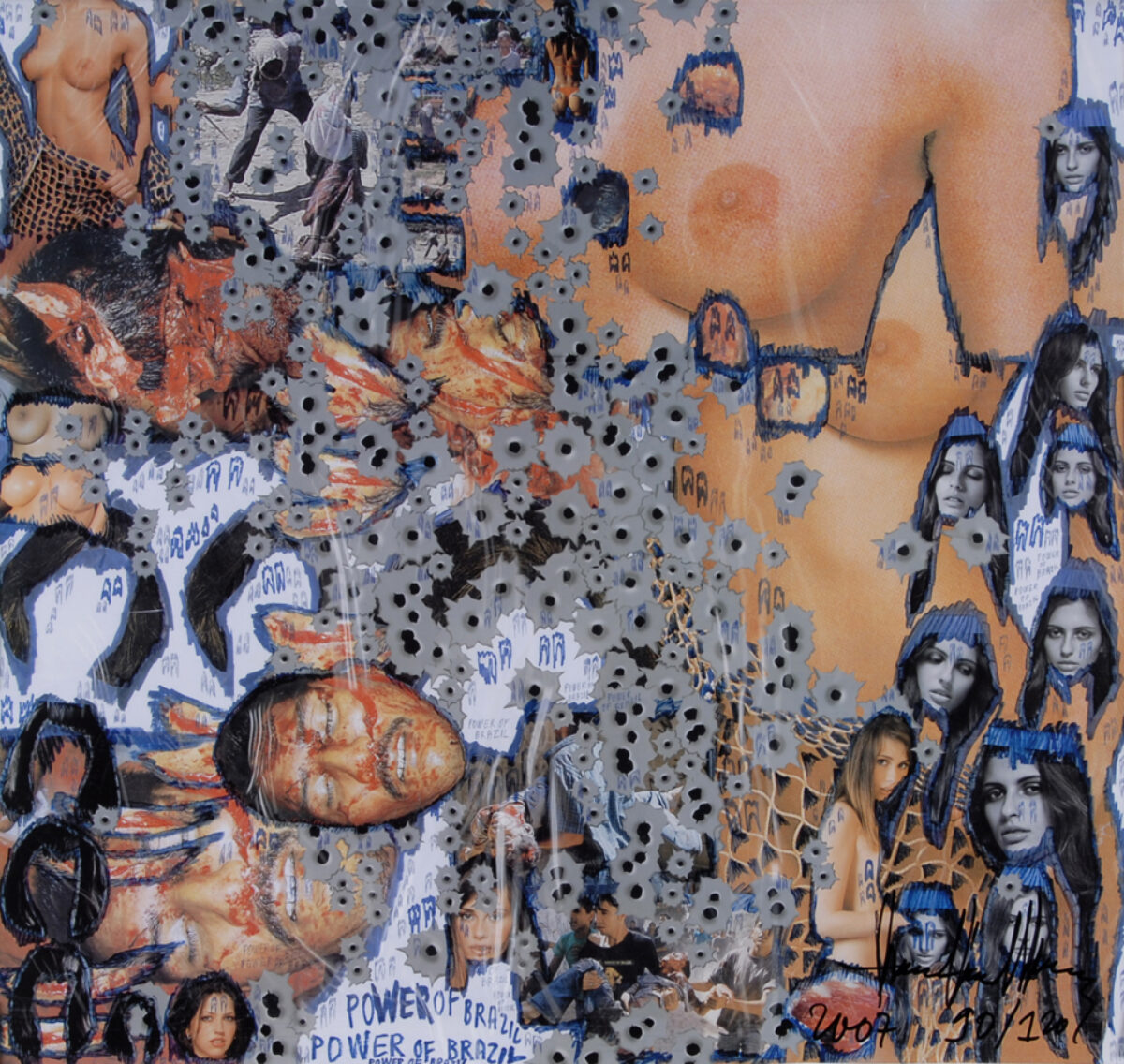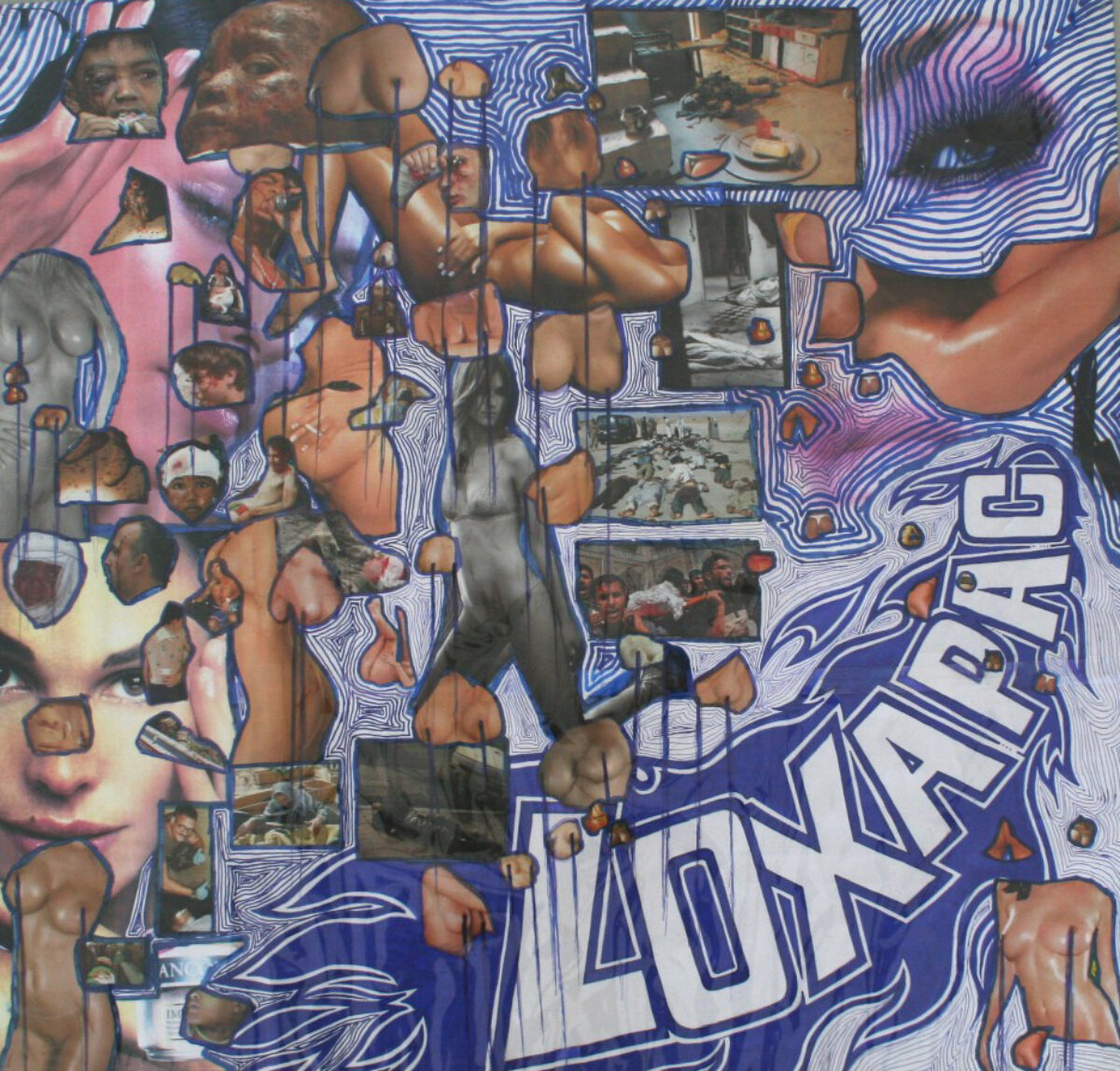Born in 1957 in Bern, Switzerland, residing in Paris
His installations are overwhelming. Hirschhorn assembles chaotic installations from cheap materials for packing merchandise ordered over the Internet, such as boxes, wrapping paper, glue, cellophane, wooden strips and moulding and from consumer waste, especially bottles of all kinds, from broken television sets and plastic chairs, which spread throughout the space like a cancerous tumour. At first glance, the rather absurd configuration is composed of various clippings from newspapers and magazines which are glued, pasted and affixed on these structures. Taking a closer look, one is suddenly overwhelmed with disgust, as his photographs of dead, tortured and disfigured bodies shown in these clippings and photos are often unbearable. And so, from playful and absurd mazes, as if from an obsessed handyman, he creates caves of horror.
Hirschhorn thinks of himself as an artist who makes political art. “I want to do active art, art that activates the brain”. This is not an easy task in today’s mass-media world. This is why this artist/politician draws attention to himself with the help of scandals. In 2004, he installed “Swiss-Swiss-Democracy” at the Swiss cultural centre in Paris, a maze showing horrible torture scenes from the war in Iraq, which were made into a collage with the coats of arms of the Swiss cantons. The cultural foundation Pro Helvetia immediately reacted by cancelling the exhibit’s already promised financial support.
Another one of Hirschhorn’s fundamental endeavours is to address not only exhibit audiences with his installations but also the public who does not normally visit exhibits. His street alters (Strassenaltäre) were famous in this respect. They have so far been dedicated to the artists Piet Mondrian and Otto Freundlich and to the American writer Raymond Carver.
The horrible scenes, which had already become a characteristic trait for this activator of the human conscience, are consciously used by Hirschhorn. By using these, he wants to express the “hard core of reality”. He hopes that, in this way, he can activate the audience. This is also what he intended at the 54th Biennale in Venice in 2010, where he represented Switzerland. His installation was entitled “Crystal of Resistance”. Composed mainly of glass and mirrors, it truly appeared to be a collage of glimmering crystal, but only until the observer notices the photographs and clippings which document, as always in Hirschhorn’s works, the hard and frequently nauseating core of reality.
Text by Noemi Smolik

